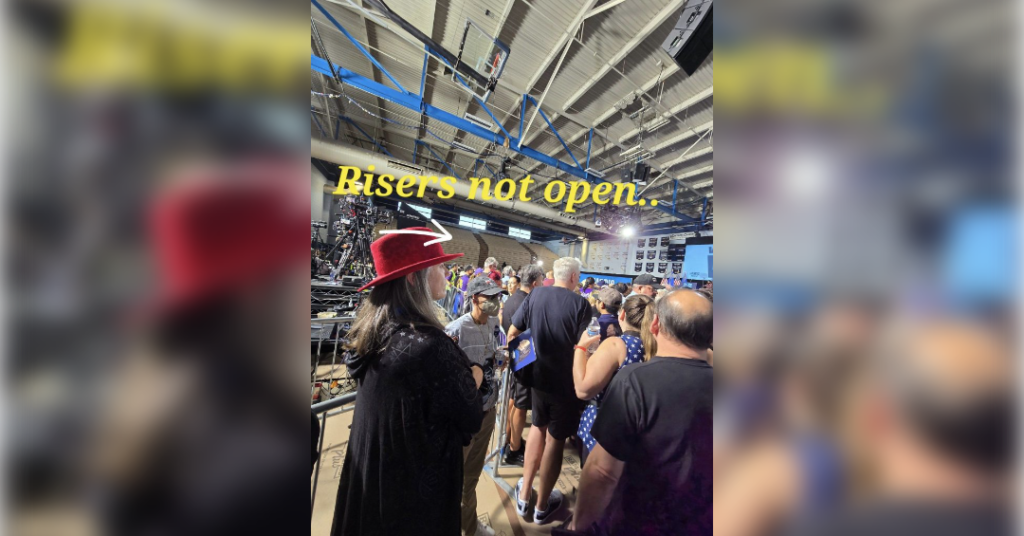Barack Obama’s recent rally in Las Vegas, held in a small high school gym, sparked a wave of irony and frustration among attendees, particularly regarding the security measures enacted for the event. While Obama aimed to motivate voters to support Kamala Harris, the rally was marked by an unusual requirement for attendees to register via Google and present identification for entry. The situation was seen as hypocritical since Nevada allows voting without ID, yet participation in a rally for a former president necessitated it. This contradiction underscored some attendees’ dissatisfaction with what they perceived as a crumbling Democratic Party narrative amidst growing economic struggle, highlighting a tense political atmosphere within the state.
Upon arriving at the venue, the attendees noted the irony of the surrounding environment, including a street sign reading “KARMA” adjacent to a division of welfare services. The presence of such signs seemingly amplified the sentiment that attendees of the rally were often reliant on government assistance, thereby being manipulated by the Democratic Party. This prompted some observers to question the intelligence and motivation of those supporting the party, particularly amidst rising costs of living and inflation affecting many in Las Vegas. Attendees began to feel frustrated with those around them, perceiving them as lacking critical examination of the policies that had led to their discontent.
Once inside, the cramped conditions and substantial overcapacity served as significant concerns, as safety hazards loomed with people standing closely in a gymnasium meant for seated audiences. There were noticeable discrepancies with arrangements not typically seen in such rallies, such as parts of the gym being closed off from camera view to create an illusion of fuller attendance. Observing the environment fueled further skepticism regarding the integrity of the event. Committed to safety, the attendees ultimately decided to leave the gym after noting the overwhelming number of people and inadequate space for emergencies, surpassing the gym’s capacity.
In an unprecedented twist, the overflow room had a stark contrast, filled with empty chairs and only having a few people present. Observers found humor in the discrepancy between the reported attendance of 3,500 and the room’s wide expanse of unoccupied seats, leading to speculation about the legitimacy of the rally’s turnout. Meanwhile, an underlying current of disorganization characterized the rally, with attendees expressing frustration at the poor planning that marred their experience and detracted from their ability to glean insights from the candidates’ speeches.
The atmosphere of the rally shifted as individuals began to notice sporadic waves of new arrivals, leading to questions about the source of these attendees. Significant numbers came from two large buses that appeared shortly after participants exited the gym, raising questions about whether these individuals had been transported in from elsewhere and the implications this brought to local elections. These observations contributed to an ongoing narrative of skepticism surrounding potential election integrity issues, highlighting concerns about the authenticity of individuals voting in local elections without proper identification protocols.
As the day’s events wound down, attendees noted an abundance of rental cars and vehicles with out-of-state plates near the Election Department, raising further suspicions. This prompted a broader conversation about the state of election security and the perceived inadequacies within Nevada’s voting system. Ultimately, the culmination of these concerns served to amplify feelings of mistrust within the electoral process, leaving many attendees feeling disillusioned and alarmed about the trajectory of democratic participation in the state. Amid these tensions, the ongoing political discourse in Las Vegas reflected a deeper societal divide, challenging both parties to address the concerns of their constituents earnestly.

